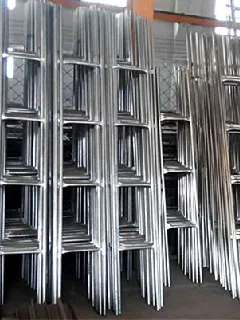loading...
- No. 9, Xingyuan South Street, Dongwaihuan Road, Zaoqiang County, Hengshui, Hebei, China
- admin@zjcomposites.com
- +86 15097380338
- Welcome to visit our website!
Innovative Applications of FRP Piles in Modern Construction Techniques and Solutions
Understanding FRP Piles A Modern Solution for Deep Foundations
In the field of civil engineering and construction, the choice of foundation is crucial to the stability and longevity of a structure. Among the various options available, Fiber Reinforced Polymer (FRP) piles have emerged as a modern and efficient solution for deep foundation systems. Their unique properties make them advantageous in various applications, particularly in environments where traditional materials may face limitations.
What are FRP Piles?
FRP piles are composite materials made from a combination of fiber reinforcements and a polymer resin. This composition results in a product that is not only lightweight but also strong and resistant to various environmental factors. Common fibers used in FRP piles include glass, carbon, and aramid, each offering distinct benefits and performance characteristics. The polymer matrix, typically epoxy or vinyl ester, enhances the durability of the piles, making them suitable for a wide range of applications.
Advantages of FRP Piles
One of the most significant advantages of FRP piles is their resistance to corrosion. Traditional materials, such as steel, are prone to deterioration when exposed to moisture, chemicals, and other environmental stresses. In contrast, FRP piles can withstand harsh conditions, including saline environments, making them ideal for coastal and marine applications. This corrosion resistance not only extends the lifespan of the piles but also reduces maintenance costs over time.
Moreover, the lightweight nature of FRP piles simplifies transportation and installation. Since they are easier to handle compared to traditional concrete or steel piles, construction times can be significantly reduced, resulting in cost savings for project developers. Additionally, their high strength-to-weight ratio allows for the design of slender piles that can effectively support heavy loads without requiring excessive material.
Environmental Considerations
frp piles

As the construction industry increasingly focuses on sustainability, FRP piles present an eco-friendly alternative to conventional foundations. The durability and extended lifespan of FRP materials result in less frequent replacements and reduced resource consumption over time. Furthermore, the production of FRP piles can be conducted with minimal environmental impact, as many manufacturers are now employing sustainable practices and materials.
Applications of FRP Piles
FRP piles are used in various applications ranging from bridge constructions to building foundations and marine structures. Their corrosion resistance and strength make them particularly well-suited for environments like wetlands, underwater foundations, and areas with aggressive soil conditions. In addition, these piles play a vital role in infrastructure projects, including retaining walls and tunneling, where adaptability and resilience are paramount.
Challenges and Future Prospects
Despite their numerous advantages, FRP piles are not without challenges. The initial cost of FRP materials can be higher compared to traditional options, which may deter some investors. However, when weighed against the long-term savings resulting from reduced maintenance and replacement efforts, the investment can be justified.
Looking ahead, ongoing research and development in the field of materials science are likely to yield innovations that enhance the performance and reduce the costs associated with FRP piles. As technology continues to advance, their adoption in construction is expected to grow, driven by their unique properties and the increasing demand for sustainable building practices.
Conclusion
In conclusion, FRP piles represent a significant advancement in foundation technology. Their unique combination of strength, lightweight design, and corrosion resistance makes them an ideal choice for a variety of applications. As the construction industry evolves, embracing more sustainable and durable materials will be essential, and FRP piles are poised to play a pivotal role in this transformation. By integrating these modern solutions into civil engineering practices, we can pave the way for safer and longer-lasting infrastructure.
-
The Rise of FRP Profiles: Strong, Lightweight, and Built to LastNewsJul.14,2025
-
SMC Panel Tanks: A Modern Water Storage Solution for All EnvironmentsNewsJul.14,2025
-
GRP Grating: A Modern Solution for Safe and Durable Access SystemsNewsJul.14,2025
-
Galvanized Steel Water Tanks: Durable, Reliable, and Ready for UseNewsJul.14,2025
-
FRP Mini Mesh Grating: The Safer, Smarter Flooring SolutionNewsJul.14,2025
-
Exploring FRP Vessels: Durable Solutions for Modern Fluid HandlingNewsJul.14,2025
-
GRP Structures: The Future of Lightweight, High-Performance EngineeringNewsJun.20,2025
